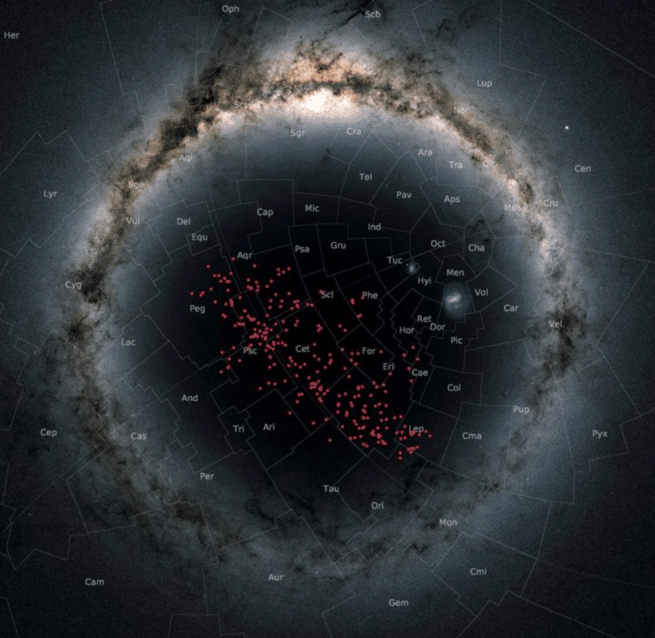The Cosmos with the Milky Way New Star Stream
A new study published this month in the journal Astronomy and Astrophysics details new observations of a 1,300-light-year-long cluster of more than 4,000 stars that have been moving together through the southern sky for about a billion years now. Distributed like a river of bright lights, a cluster like this has never been found so close to Earth, and could create some useful opportunities for learning about the structure and evolution of the galaxy.
“Similar stream-like structures have been known for quite a while now,” says Stefan Meingast, a researcher from the University of Vienna and the lead author of the new study. They are typically considered remnants of more globular clusters or dwarf galaxies that have been pulled apart and distorted over time, but still share a pattern of movement that hint at a shared origin.
Previous streams have been found in the outskirts of the Milky Way. “Our stream, however, is the first one that was found inside the galaxy, in the immediate vicinity of the sun,” says Meingast. “It therefore is a unique probe for studying the evolution of clusters and for measuring the gravity field of the galaxy.”
There had been previous hints that such a stream existed, through some scattered observations. But this latest investigation is the first to confirm that this is a big, coherent structure. What changed? The European Space Agency’s Gaia mission. An audacious project launched in 2013, Gaia plans to catalog over 1 billion astronomical objects and provide the most precise 3D map of the galaxy ever made.
Yes, it’s a bit strange to think a cluster of stars this large was simply hiding in plain sight for so long, but astronomers know better than to feel embarrassed. When you think about how extraordinarily large space is, trying to locate even several thousand stars streaming through the galaxy is “truly like searching for the needle in the haystack,” says Meingast.
The team was initially tasked with simply using the Gaia data to locate groups of stars that were moving together, and eventually they came across the “structure” of these stars that were moving as a group. The team pinpointed only about 200 stars; the 4,000 figure, and their 1-billion-year age, are extrapolations based on an analysis of stellar brightness, distance, and other factors.
